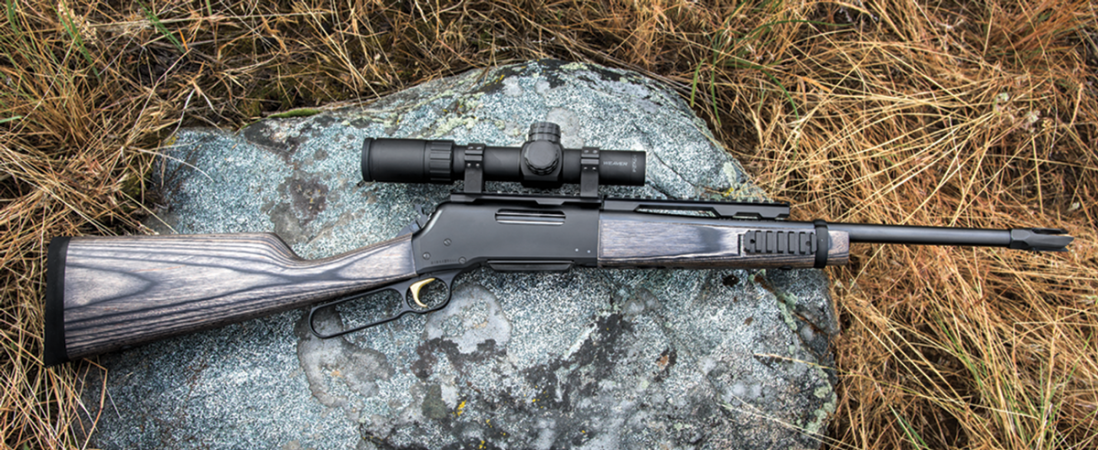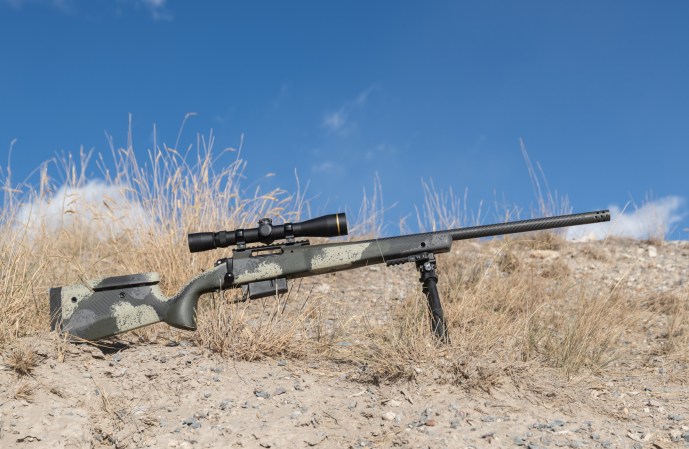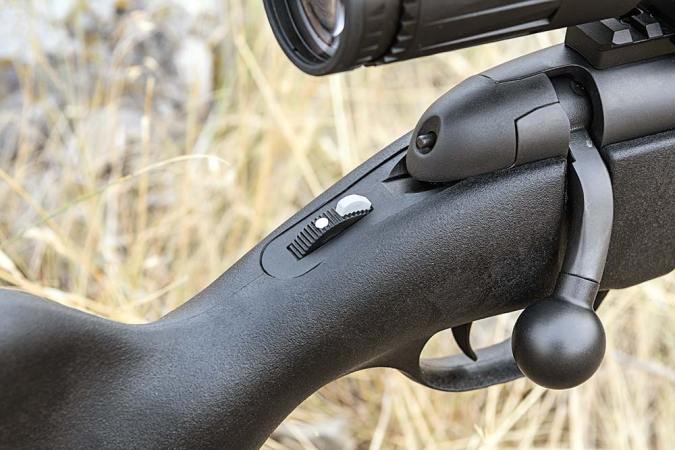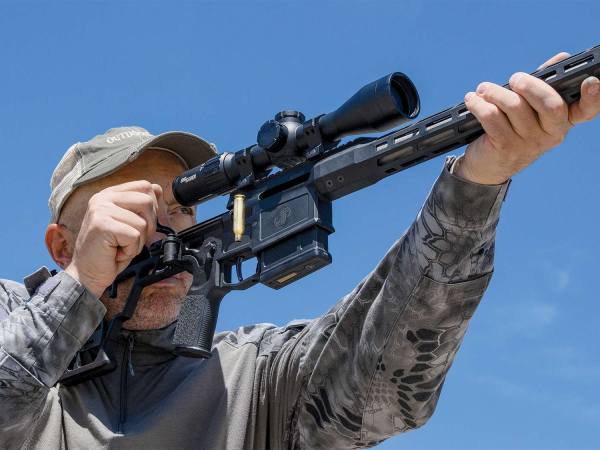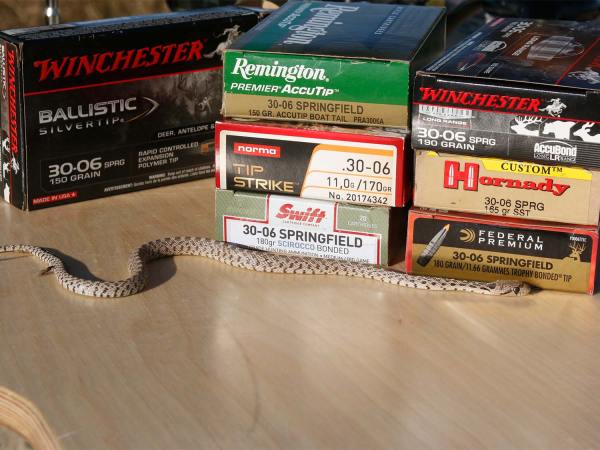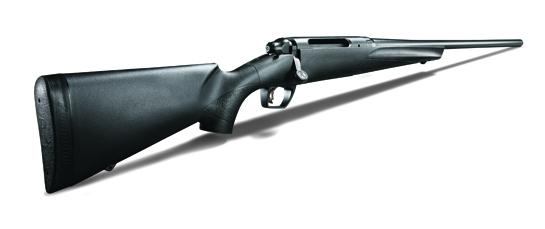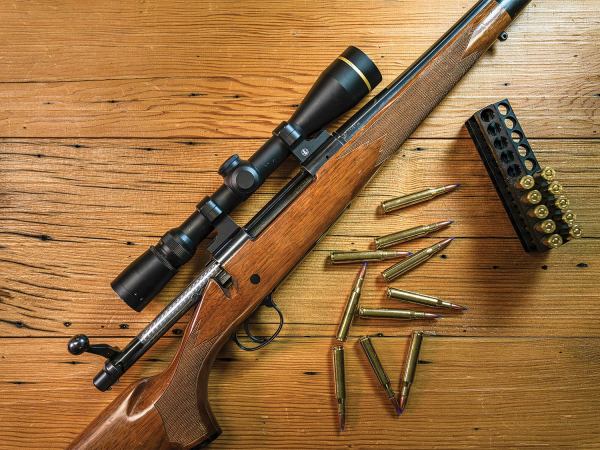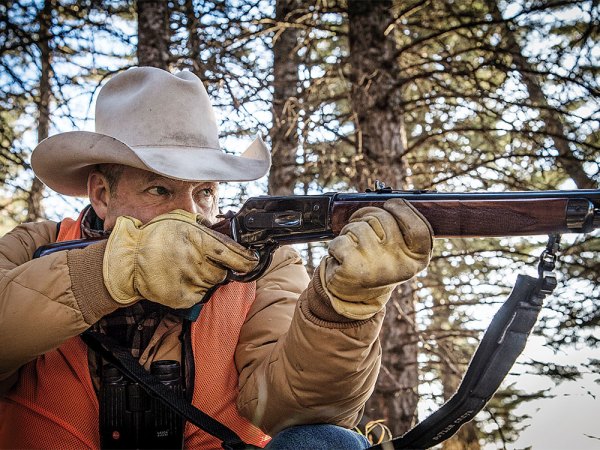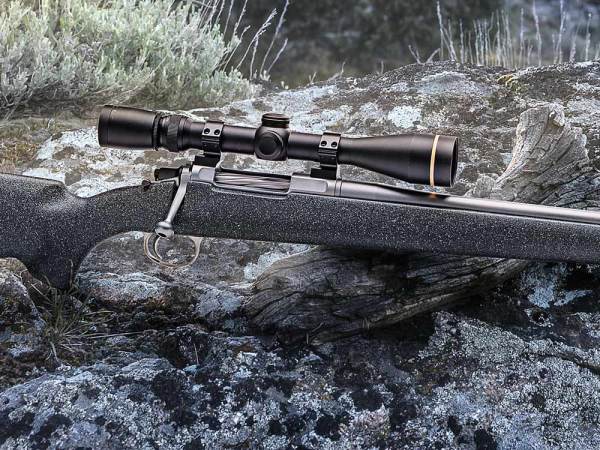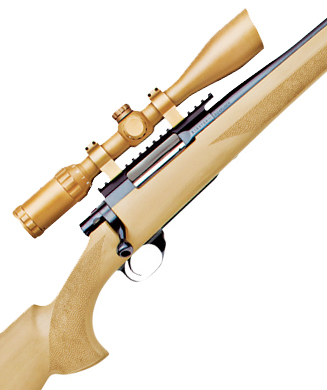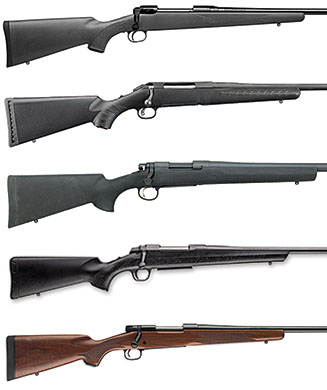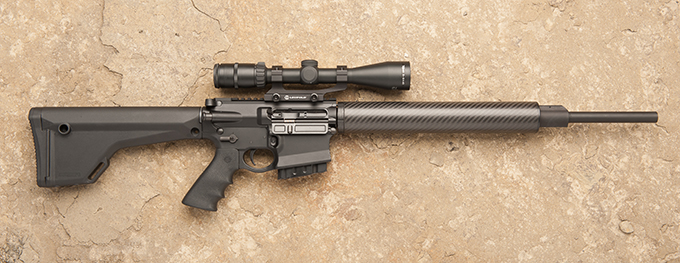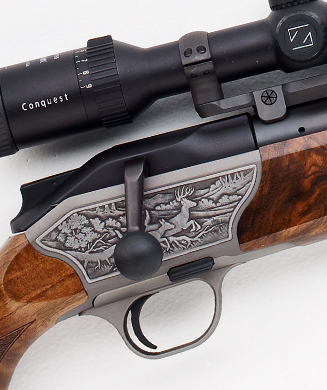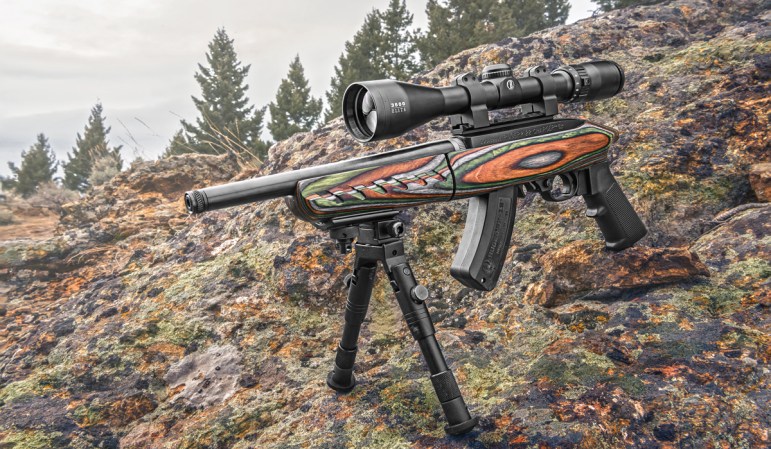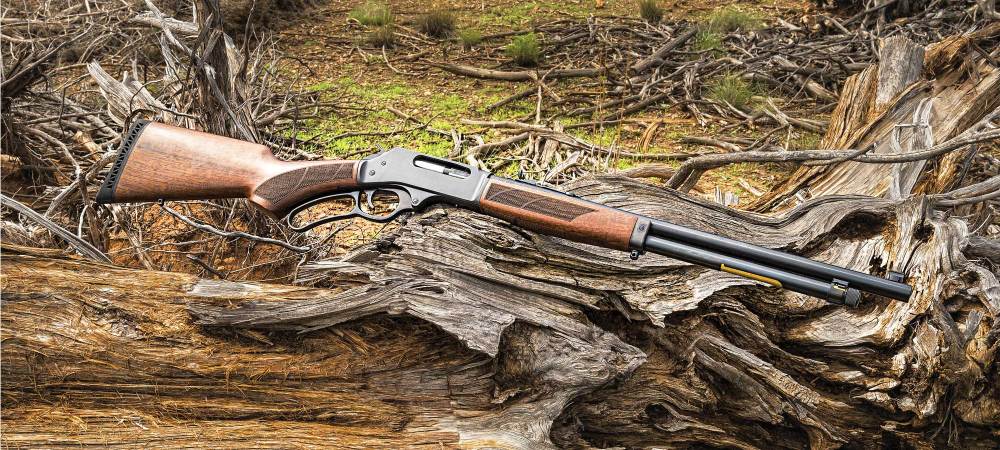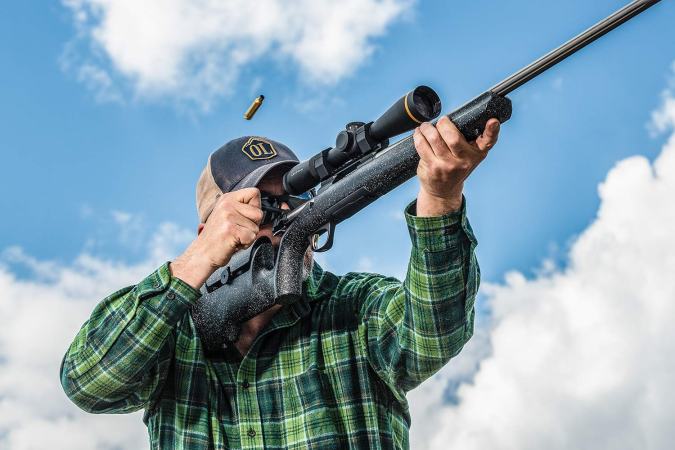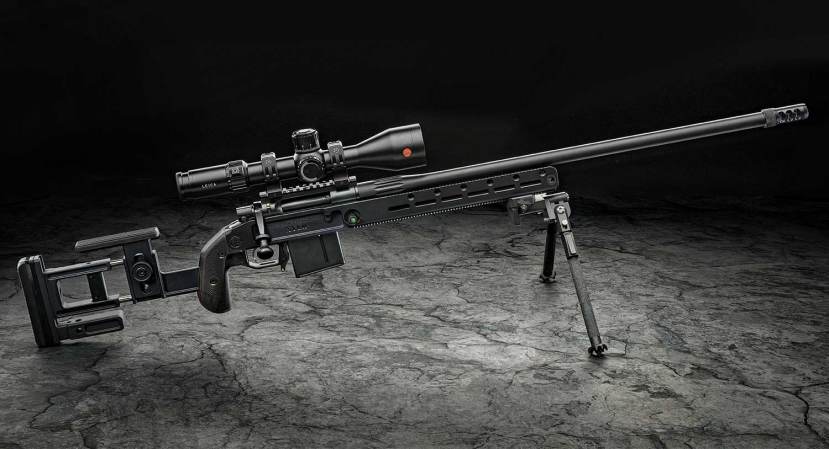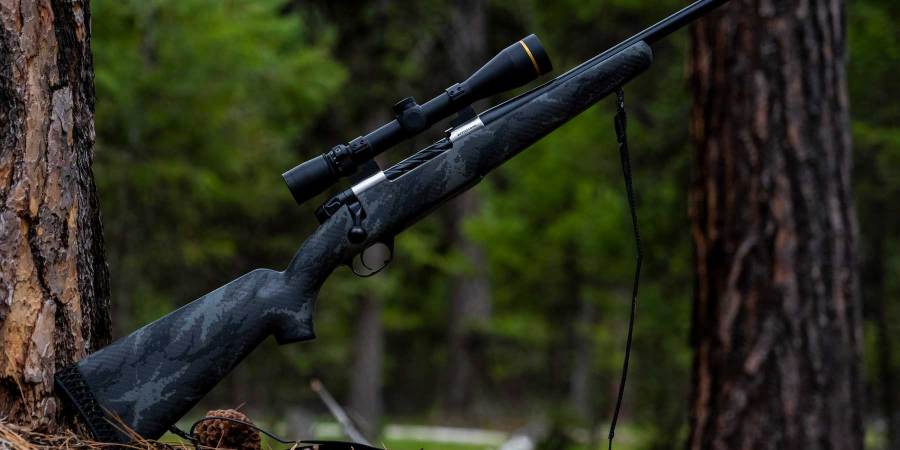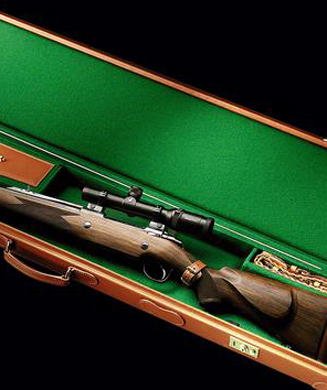We may earn revenue from the products available on this page and participate in affiliate programs. Learn More ›
The takedown rifle is an idea whose time has finally arrived. There’s nothing new about the takedown concept, with variations going back centuries. Marlin, Savage and Winchester were all making centerfire takedown rifles over a hundred years ago, and of course there have been dozens of rimfire takedowns over the years, Browning’s .22 Automatic and Marlin’s ever-popular M-39 being a couple of examples. But it is in the centerfire persuasion that the takedown configuration takes on real meaning–and gets a lot more complicated.
The purpose and convenience of a takedown rifle is obvious: A rifle that can be taken apart so that its length is reduced by about half is easier to store, pack, travel with–and hide. Yet American hunters have never much cottoned to the idea, as evidenced by the relatively few takedowns sold during the golden years of the Marlin, Savage and Winchester lever rifles. Takedown versions of otherwise popular non-takedown models are so rare that collectors will pay 20 to 50 percent extra for them.
One reason takedown rifles have recently become the focus of many hunters and rifle builders is traceable to 9/11 and the anxieties that followed. Hunters who once thought nothing of traveling with full-length gun cases now feel more at ease using cases that don’t look like gun cases and are thus better protected from suspicious eyes at airline check-in counters and the prying fingers of baggage handlers.
Another reason for their popularity is the recent avalanche of quickie “safaris” to African game farms (five animals in five days), which has created a demand for a rifle that “does it all” simply by switching barrels. In the case of these rifles, takedown capability is incidental. So, before going on, let’s determine exactly what we mean by “takedown” rifles. A rifle that simply comes apart doesn’t necessarily fit the description. The same goes for rifles with folding or collapsible stocks.
TWO TYPES OF TAKEDOWNS
Though some fans and collectors might disagree, I lump takedowns into two categories. The first I call “incidental” takedowns, meaning that the fact that they can be taken down and conveniently cased is quite incidental–accidental even–to the intent of their original design. Prime examples of incidental takedowns are, of course, break-action, double-barreled rifles. Their design intent was to provide simple and reliable operation. The fact that their barrels are easily removed from the action is an incidental, albeit happy, bonus.
Also included in this category are more modern concepts such as the Blaser rifle, which in addition to being a novel bolt-action variation features a relatively fast and simple barrel-removal and caliber-switching arrangement. By loosening a couple of screws, the barrel can be separated from the action and stock and the two separated units can be packed and carried with relative convenience. This “takedown” capability, however, is merely incidental to the Blaser’s original barrel-switch concept.
I call the other category “intentional” takedowns, because they were either expressly designed so they could be quickly taken apart for compact carry or modified from a traditional design for takedown convenience.
This latter group includes lever rifles, some more than a century old, that were originally designed as rigid, full-length models but were subsequently redesigned so that the barrel, tube magazine and forearm could be quickly removed from the receiver, making them true and honest “intentional” takedowns.
The way these rifles come apart is usually simple, with the threaded breech of the barrel being screwed out of and into the matching receiver and locked in place by a latch or other mechanism. Some models feature an interrupted thread arrangement, which allows the barrel to be quickly inserted into the receiver, given a half twist and locked in place. Typically, these lever-action takedowns are beautifully fitted and aligned and have cleverly designed mechanisms for locking the barrel securely in place. This is one of the reasons they are prized so highly by collectors in the gun trade.
DEALING WITH SCOPES
In those happy days when American hunters traveled to their destinations by ship or rail with cased takedown rifles conveniently stored under berth or seat, the lever rifle ruled the plains and mountains.
Nowadays the preference is for bolt-action rifles in increasingly powerful calibers. This has complicated the takedown issue in several ways, but it has also brought about some very creative designs and successful solutions.
Basically, a bolt-action takedown rifle can be of a simple barrel-unscrewing design, and many of them are. In fact, during WWII the Japanese made just such a takedown modification to their Arisaka Type 99 bolt rifle for use by their paratroopers. Likewise, along the way many gunsmiths have taxed their ingenuity by building special-order, one-of-a-kind takedown bolt rifles. But one basic problem has long plagued such efforts, no matter how noble the intent or exquisite the workmanship: telescopic sights.
With the old lever-action takedowns this was no problem, because the open sights–front and rear–were both fitted to the barrel. With scope-mounted bolt-action takedowns, however, a potentially serious problem presents itself. The scope is typically mounted on the receiver with the barrel being a separate (and not necessarily rigidly attached) unit. In other words, the barrel, and thus the shots it delivers, might be somewhat free to wander in various directions in respect to the line of sight. So there is no guarantee the rifle will return to original zero after the barrel has been removed and replaced. And with simple screw-in barrel attachments, the union with the receiver can become worn and increasingly sloppy after repeated use, making a bad situation worse.
This is why the latest and best thinking and developments with bolt-action takedowns have concentrated on a variety of ways to keep the removable barrel centered and true in the receiver. Which brings us to the latest and best in takedown rifles.
THE LATEST MODELS
Blaser solves the problem of scope/barrel alignment with ease, simply by mounting the scope on the barrel–an arrangement made possible by the short coupling of its bolt-to-barrel locking mechanism. Makers of longer, more traditional turn-bolt actions have had to rethink the attachment of the barrel to the receiver in order to achieve a close and constant union.
Two makers of high-quality takedown bolt rifles–Dakota Arms, here in the U.S., and Sauer in Germany–have replaced the traditional threaded barrel attachment with a non-threaded sleeve-like fit, in which the shank of the barrel slips into a tightly dimensioned hole in the front of the receiver.
This, of course, would not be a workable proposition with a traditional bolt-action in which the bolt’s locking lugs engage matching recesses in the receiver. At least, it wouldn’t work for long, because a non-threaded barrel would want to blow forward like a torpedo. Dakota and Sauer, however, solve this mechanical dilemma by locking the bolt into the barrel rather than the receiver. Thus the receiver becomes only a fixture that holds everything together, but with no particular strength requirements. This system allows the manufacturer to concentrate on a design that ensures the best possible alignment of barrel, action and scope. With the Dakota rifle the alignment is further enhanced by a simple clamping arrangement that tightens the receiver ring around the barrel shank for a near-perfect repeatable fit. In classic takedown fashion, the forearms of the Dakota and Sauer rifles detach to reduce the length of the stock.
The forearm of the H-S Precision bolt-action takedown likewise detaches, although the barrel-to-receiver attachment is of the traditional threaded type. The H-S attachment system has interrupted threads in three segments, requiring only a third of a turn to lock the barrel in place. In order to ensure tight alignment, the H-S system employs closely machined plates at the barrel and action mating surfaces that snug together when the barrel is twisted into position. The fit is then secured with a lug and lever latch embedded in the forearm. The H-S system is the same one used by U.S. Repeating Arms on the Custom Shop M-70 Winchester takedowns it offered a few years back.
There are, of course, quite a few other takedown designs around, many of which are one-of-a-kind and very original. And it’s a sure bet that in the coming years more major makers will be introducing their own takedown models; some are almost certainly already on the drawing boards. After all, it’s an idea whose time has come.
Takedown Riflemakers
DAKOTA ARMS, INC. 1310 Industry Road Sturgis, SD 57785 605-347-4686; www.dakotaarms.com
H-S PRECISION, INC. 1301 Turbine Drive Rapid City, SD 57703 605-341-3006; www.hsprecision.com
JARRETT RIFLES, INC. 383 Brown Road Jackson, SC 29831 803-471-3616; www.jarrettrifles.com
SIGARMS, INC. (BLASER AND SAUER RIFLES) 18 Industrial Drive Exeter, NH 03833 603-772-2302; www.sigarms.com
For more shooting information, go to www.outdoorlife.com/shooting

